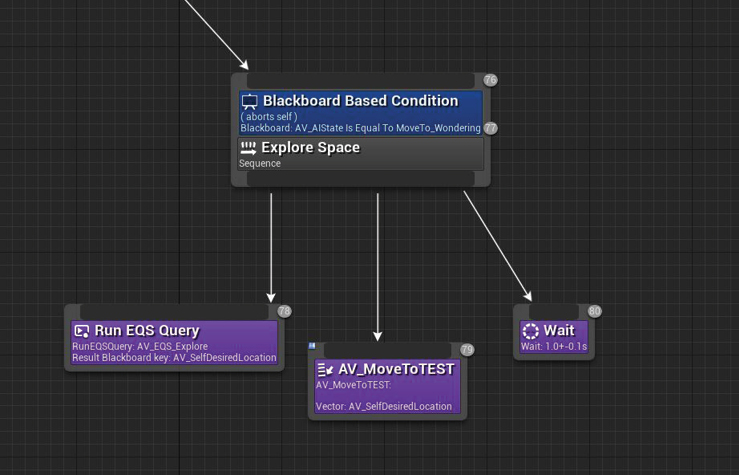157
Tool Creation |Human Agents
156
Tool Creation |Human Agents
EQS allows us to check the surrounding environment to calculate locations based on how far away they are from the agent
Screen-recorded by Author.
Agent Exploring the space by utilizing this data
Simulated and screen-recorded by Author.
Explore Tasks defined within the Behaviour Tree
Screen-captured by Author.
Default State
Due to the responsive nature of these agents, one of the important questions we must first ask is: What do the agents do when the surrounding space is empty? In other words, we must first define a base state in which the agents can operate with limited knowledge and no environmental information to work from.
In order to define this state, we must make some assumptions. Imagine if people were left in an empty room; What would they do? Would they do nothing, or would they explore? Chances are, most people would explore to see if there is anything around them rather than just doing nothing. Ideally, we would be able to perform a survey from a population to deduce an average base state, but since this simulation only needs to be an approximation, this generic assumption of exploration should be adequate to visualize crowd flow.
To simulate this task of exploration, we should ask ourselves what it means to explore the space within an empty room. The lack of features means that there is nothing to attract our attention, therefore the only variance within such a space would be the distance of the agent to the boundary of this space. In that context, it makes logical sense that the furthest point offers the most mystery; therefore, it should also offer the highest incentive to investigate.
Translating this to game engine logic then, we can configure the EQS tool to query the environment around the agent every second and provide a location that is the farthest point to the agent. (Fig. 3.3.15 - 16) In doing so, it provides the illusion of exploration. (Fig. 3.3.17)
